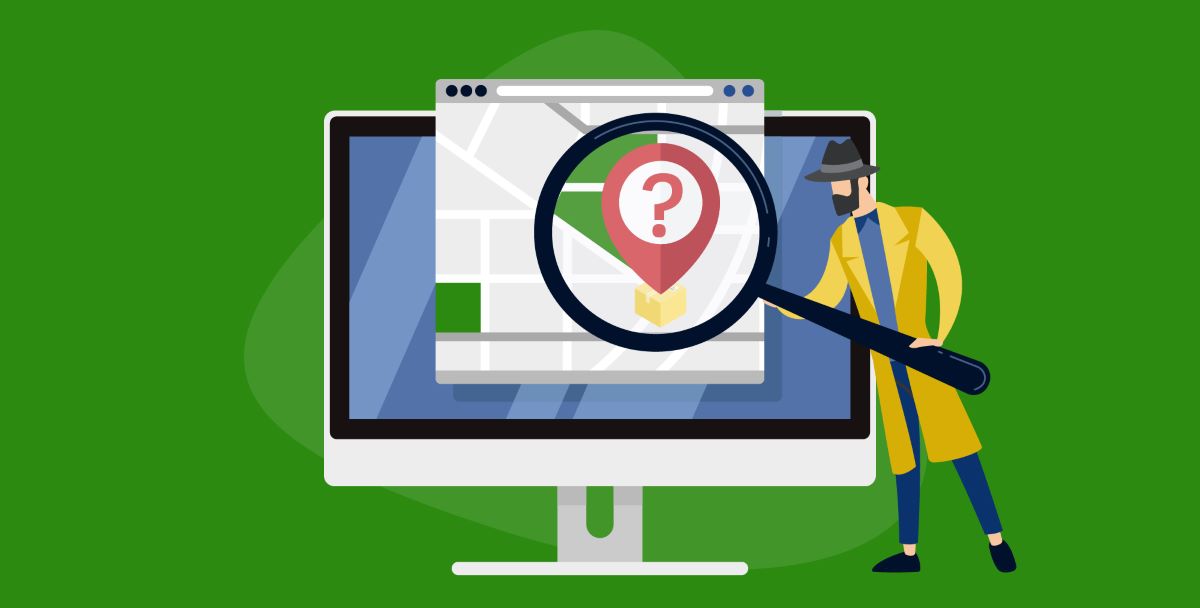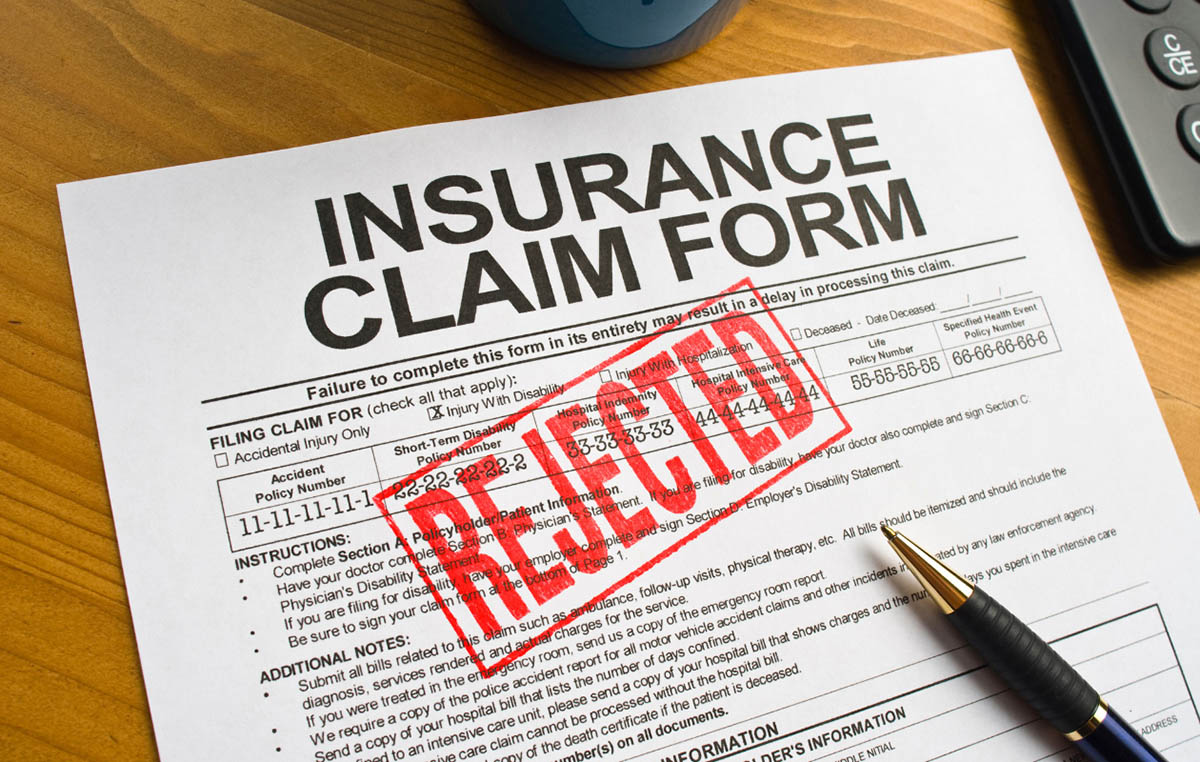Home>Finance>How To File A Claim On Someone Else’s Insurance


Finance
How To File A Claim On Someone Else’s Insurance
Published: November 15, 2023
Learn how to file a claim on someone else's insurance and get the financial compensation you deserve. Expert tips and guidance for navigating the process.
(Many of the links in this article redirect to a specific reviewed product. Your purchase of these products through affiliate links helps to generate commission for LiveWell, at no extra cost. Learn more)
Table of Contents
Introduction
When an accident or unexpected incident occurs, it can be a stressful and challenging experience. In some cases, you may find yourself needing to file a claim on someone else’s insurance to cover any damages or losses you have incurred. Whether it’s a car accident, property damage, or personal injury, understanding the process of filing a claim on someone else’s insurance can help ease the burden and ensure that you receive the compensation you deserve.
In this article, we will guide you through the steps involved in filing a claim on someone else’s insurance. From assessing the situation to negotiating and settling the claim, we will provide you with the necessary information to navigate this process effectively.
It’s important to remember that every insurance claim is unique, and the specific steps and requirements may vary depending on the insurance company and the nature of the incident. However, by following these general guidelines, you can better navigate the claims process and increase your chances of a successful outcome.
Now, let’s delve into the step-by-step process of filing a claim on someone else’s insurance.
Step 1: Assess the Situation
The first step in filing a claim on someone else’s insurance is to assess the situation. This involves evaluating the damages or losses you have incurred and determining whether or not the incident falls under the coverage of the other party’s insurance policy.
For example, if you were involved in a car accident, assess the extent of the damage to your vehicle and any injuries you may have sustained. Take note of any other parties involved and gather their insurance information if possible. In the case of property damage or personal injury, assess the extent of the damage or injuries and document any evidence or relevant details that can support your claim.
It’s important to keep in mind that insurance policies have specific coverage limits and conditions. Make sure to review the other party’s insurance policy to determine if your situation is covered. If you are unsure, you can seek advice from a personal injury attorney or contact the other party’s insurance company for clarification.
Assessing the situation will help you understand the potential outcome of your claim and determine if pursuing a claim is the right course of action. If the damages or losses are minor and can be easily resolved without involving insurance, it may be more convenient to handle the situation directly with the other party. However, if the damages are significant or involve injuries, filing a claim on someone else’s insurance is generally the recommended course of action.
Once you have assessed the situation and determined that filing a claim is necessary, you can then proceed to the next steps in the process.
Step 2: Gather Necessary Information
After assessing the situation and determining that filing a claim on someone else’s insurance is the appropriate course of action, the next step is to gather all the necessary information to support your claim. This includes collecting evidence, documenting damages, and obtaining the insurance information of the responsible party.
Start by gathering any evidence related to the incident. This can include photographs of the damages, injuries, or any other relevant details that provide a clear picture of what happened. If there were any witnesses to the incident, try to obtain their contact information, as their testimonies can help strengthen your claim.
In addition to gathering evidence, it is crucial to document any expenses or losses resulting from the incident. This may include medical bills, repair estimates, receipts for damaged property, or any other related costs. Keeping a record of these expenses will help demonstrate the financial impact of the incident.
Furthermore, ensure that you obtain the insurance information of the responsible party. This typically includes their insurance company’s name, policy number, and contact information. This information is essential when it comes time to file the claim and communicate with the insurance company.
It’s important to be thorough in gathering all the necessary information to provide a strong foundation for your claim. Remember to keep copies of all documents and evidence for your records.
By gathering the necessary information, you will be well-prepared to move on to the next step of the process: contacting the insurance company.
Step 3: Contact the Insurance Company
Once you have gathered all the necessary information to support your claim, it is time to contact the insurance company of the responsible party. You should notify them of the incident and provide them with the relevant details.
Start by locating the contact information for the insurance company. This can usually be found on the insurance card or policy documents of the responsible party. If you are unable to find this information, you can try searching online or contact the responsible party directly to obtain their insurance company’s contact details.
When contacting the insurance company, be prepared to provide them with the following information:
- Policyholder’s name and policy number: Provide the insurance company with the name of the person who holds the insurance policy and their policy number, if available.
- Date and location of the incident: Clearly state the date and location where the incident occurred, providing as much detail as possible.
- Description of the incident: Give a concise and accurate description of what happened, explaining the damages or injuries sustained.
- Contact information of all parties involved: Provide the insurance company with your contact information, as well as any other parties involved, such as witnesses or other individuals affected by the incident.
- Evidence and documentation: Inform the insurance company that you have evidence and documentation supporting your claim and offer to provide this information if requested.
During the conversation with the insurance company, it is important to remain calm and professional. Be prepared to answer any questions they may have regarding the incident and provide them with any additional information they require.
By contacting the insurance company promptly, you can initiate the claims process and ensure that your claim is on file and being processed accordingly.
Step 4: File the Claim
After contacting the insurance company and providing them with the necessary details, the next step is to formally file the claim. Filing the claim involves submitting a formal request to the insurance company, outlining the damages or losses you have incurred as a result of the incident.
To file the claim, follow these important steps:
- Complete the claim form: The insurance company may provide you with a claim form to fill out, either electronically or in paper format. Make sure to complete this form accurately and provide all the requested information. Double-check the form for any errors before submitting it.
- Submit supporting documentation: Along with the completed claim form, include any supporting documentation that is relevant to your claim. This can include photographs, repair estimates, medical bills, or any other evidence that supports your case.
- Submit the claim within the designated timeframe: Be aware of the deadline for filing the claim and ensure that you submit it within the specified timeframe. Failing to file the claim within the designated period may result in a denial or delay in processing.
- Keep copies of all submitted documents: Make copies of all the documents you submit, including the claim form and supporting evidence. These copies will serve as a record of your claim and help you stay organized throughout the process.
When filing the claim, it is crucial to be thorough and provide as much detail as possible. Clearly explain the damages or losses you have incurred, referencing the evidence and documentation you have gathered. By providing a well-documented and comprehensive claim, you increase your chances of a successful outcome.
Once the claim is filed, the insurance company will begin their investigation and evaluation process. They may reach out to you for additional information or clarification. It is important to cooperate with the insurance company during this phase and promptly respond to any requests they may have.
By successfully filing the claim, you have taken a significant step in the process of seeking compensation for the damages or losses you have experienced.
Step 5: Provide Necessary Documentation
Once you have filed the claim, the insurance company will begin the process of reviewing and evaluating your case. During this stage, it is important to provide the necessary documentation to support your claim and assist the insurance company in their assessment.
Here are some essential documents you may need to submit:
- Evidence of the incident: Provide any evidence you have gathered, such as photographs, videos, or recordings, that clearly illustrate the damages or injuries sustained. This visual evidence helps the insurance company understand the severity of the situation.
- Police report: If the incident involved law enforcement, include a copy of the police report in your documentation. This report provides an official account of the incident and can support your claim.
- Medical records: If you suffered any injuries as a result of the incident, provide the insurance company with copies of your medical records, including diagnoses, treatments, and bills. These records demonstrate the extent of your injuries and the associated medical expenses.
- Repair estimates or invoices: If you had property damage, such as a damaged vehicle or damaged property, include repair estimates or invoices from reputable repair shops. These documents validate the cost of repairs and support your claim for reimbursement.
- Other relevant documentation: Depending on the nature of the incident, there may be additional documentation required. This could include witness statements, expert opinions, or any other relevant information that strengthens your case.
Accurate and thorough documentation is crucial in the claims process. Ensure that all documents are legible and organized, making it easier for the insurance company to review your claim. Keep copies of all submitted documents for your own records.
If the insurance company requests additional documentation or information, be prompt in providing a response. Cooperation and clear communication with the insurance company will help expedite the claims process and increase the likelihood of a favorable resolution.
By providing the necessary documentation, you are helping the insurance company understand the extent of the damages or losses you have experienced and strengthening your case for compensation.
Step 6: Follow Up and Stay Involved
Once you have provided the necessary documentation to the insurance company, it is important to follow up and stay involved in the claims process. This step is crucial in ensuring that your claim is being processed and that you are updated on its status.
Here are some important actions to take during this stage:
- Keep track of communication: Maintain a record of all communication with the insurance company. This includes phone calls, emails, and any other correspondence related to your claim. This will help you keep track of important dates, conversations, and any agreements made.
- Follow up on the progress: If you haven’t heard from the insurance company within a reasonable timeframe after submitting your claim, it is appropriate to follow up to inquire about the status. Be polite and professional when communicating with the insurance company and request updates on the progress of your claim.
- Respond promptly: If the insurance company reaches out to you for additional information, make sure to respond promptly. Delaying your response may cause unnecessary delays in the processing of your claim.
- Ask questions: If you have any questions or concerns about the claims process, don’t hesitate to reach out to the insurance company for clarification. Understanding the timeline, procedures, and expected outcomes will help alleviate any uncertainty.
- Document new information: If any new information or developments arise during the claims process, be sure to document them. This can include any additional expenses, medical treatments, or changes in the circumstances surrounding the incident. Keeping a record of these updates will help support your claim.
Staying involved and actively following up with the insurance company demonstrates your commitment to seeking a fair resolution. It also ensures that you are informed about any progress or updates regarding your claim.
Remember, the claims process can sometimes be lengthy, and it is normal to experience delays. However, by staying involved and maintaining open lines of communication, you can help move the process forward and obtain the compensation you deserve.
Step 7: Negotiate and Settle the Claim
As the claims process progresses, it may be necessary to engage in negotiation with the insurance company to reach a settlement. This step involves discussing the value of your claim and coming to an agreement on the compensation amount.
Here are some important considerations during the negotiation and settlement process:
- Evaluate the initial offer: The insurance company may provide an initial offer for the settlement. Carefully review the offer and assess whether it adequately covers the damages or losses incurred. This may require consulting with professionals such as a personal injury attorney or an independent appraiser to determine the fair value of your claim.
- Present your case: If you believe the initial offer is insufficient, provide supporting evidence and documentation that justify a higher settlement amount. This can include medical bills, repair estimates, and other relevant information that showcases the extent of your damages.
- Negotiate in good faith: Engage in constructive and respectful negotiations with the insurance company. Be prepared to explain your position and provide additional evidence to support your claim. The goal is to reach a mutually agreeable settlement that adequately compensates you for your damages.
- Consider seeking legal advice: In more complex cases or if you are unable to reach a satisfactory settlement through negotiation, it may be necessary to seek legal advice. A personal injury attorney can provide guidance and assist you in navigating the legal aspects of your claim.
- Review and sign the settlement agreement: Once a settlement amount has been agreed upon, the insurance company will typically provide a settlement agreement. Carefully review the terms and ensure that they align with your understanding of the settlement. If necessary, consult with an attorney before signing the agreement.
Remember, negotiation can be a back-and-forth process, and it may take time to reach a settlement that both parties find fair. By presenting a strong case and being open to constructive communication, you increase the likelihood of achieving a satisfactory resolution.
Once the settlement agreement is signed, the insurance company will typically issue payment following their internal processing procedures. Be sure to follow up if there are delays in receiving your settlement.
With successful negotiation and settlement, you can bring the claims process to a close and move forward with the compensation you deserve.
Step 8: Seek Legal Advice if Needed
In certain situations, it may be necessary to seek legal advice to navigate the complex aspects of the claims process. Consulting with a personal injury attorney can provide valuable guidance and ensure that your rights are protected throughout the process.
Here are a few factors to consider when deciding whether to seek legal advice:
- Complexity of the case: If your case involves intricate legal issues or multiple parties, it may be beneficial to consult with an attorney who specializes in personal injury law. They can provide expertise and help you understand your rights and options.
- Disputed liability: If there is a dispute over who is at fault for the incident, an attorney can gather evidence, interview witnesses, and build a strong case on your behalf. They will navigate the legal complexities to prove liability and protect your interests.
- Insurance company denials or delays: If the insurance company denies your claim or delays the processing unfairly, an attorney can help you understand the legal recourse available to you. They can advocate for your rights and negotiate with the insurance company on your behalf.
- Serious injuries or significant damages: If you have suffered severe injuries or incurred substantial damages, an attorney can help ensure that you receive fair compensation. They will assess the long-term impact of the incident and work towards securing a settlement that adequately covers your losses.
- Legal guidance for negotiation and settlement: Even if your case does not necessarily require litigation, having an attorney by your side during the negotiation and settlement process can provide valuable legal insight. They will work to maximize your compensation and ensure that your rights are protected.
An experienced personal injury attorney can review your case, provide a realistic assessment of its strengths and weaknesses, and guide you through the claims process. They will handle the legal aspects, allowing you to focus on your recovery and personal well-being.
When seeking legal advice, it is essential to choose a reputable attorney who specializes in personal injury law and has a successful track record in handling similar cases. Schedule consultations with different attorneys to find the one who best understands your situation and can effectively represent your interests.
Remember, seeking legal advice is a personal decision, and it is important to weigh the benefits against the costs and potential outcomes. Consulting with an attorney can provide clarity and confidence as you navigate the complexities of your claim.
Conclusion
Filing a claim on someone else’s insurance can be a complex and overwhelming process, especially when dealing with the aftermath of an accident or incident. However, by following the step-by-step guide outlined in this article, you can navigate the claims process with confidence and increase your chances of a successful outcome.
From assessing the situation and gathering necessary information to contacting the insurance company, filing the claim, providing documentation, and negotiating a settlement, each step is essential in pursuing fair compensation for the damages or losses you have experienced.
Throughout the process, it is crucial to stay engaged and proactive. Documenting evidence, staying organized, and following up with the insurance company are key to maximizing the potential of your claim.
In cases where the claims process becomes complex or adversarial, seeking legal advice can provide you with the expertise and guidance necessary to protect your rights and obtain fair compensation.
Remember, every claim is unique, and there may be variations in the specific steps and requirements depending on the nature of the incident and the insurance company involved. It is always advised to consult the insurance policy and seek professional advice when necessary.
By understanding the process of filing a claim on someone else’s insurance and taking the necessary steps outlined in this article, you can navigate the claims process effectively and work towards obtaining the compensation you deserve.














